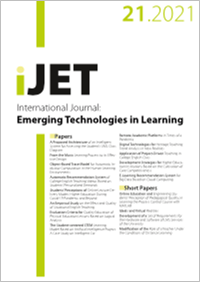Evaluation Criteria for Quality Education of Physical Education Lessons Based on Logical Analysis
DOI:
https://doi.org/10.3991/ijet.v16i21.26867Abstract
To cultivate high-quality talents, it is important to develop a set of scientific and complete evaluation criteria for comprehensive quality. The effective evaluation could promote and guide teaching and learning, and improve the overall quality of students. Considering the features of PE lessons, this paper resorts to multiple methods, e.g., questionnaire survey, Delphi’s method, mathematical statistics, and logical analysis, to establish a system of evaluation criteria for the quality education of PE lessons, the proposed system includes 4 primary indices, 10 secondary indices, and 24 tertiary indices. The weight of each index was determined through analytic hierarchy process (AHP), making the criteria more scientific. Taking the PE major of a college for example, the proposed criteria were investigated empirically. The results show that experts, teachers, and students made consistent evaluations. Thus, the proposed system and evaluation criteria are feasible, and capable of evaluating the overall quality of students objectively and fairly. The research results provide a tool and idea for improving the quality education of PE lessons in China, and promoting the evaluation of students’ overall quality.
Downloads
Published
2021-11-15
How to Cite
Ning, G. (2021). Evaluation Criteria for Quality Education of Physical Education Lessons Based on Logical Analysis. International Journal of Emerging Technologies in Learning (iJET), 16(21), pp. 87–99. https://doi.org/10.3991/ijet.v16i21.26867
Issue
Section
Papers



